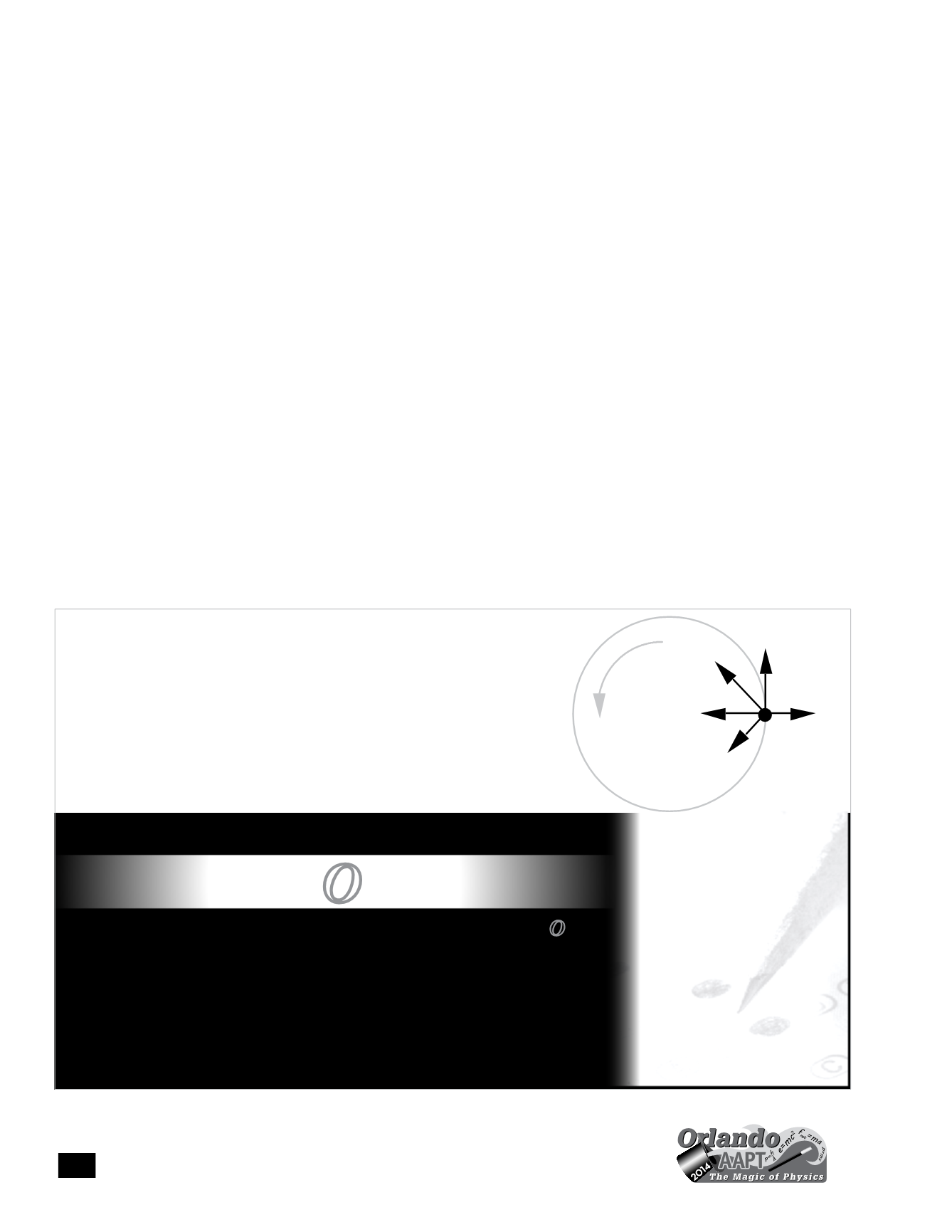
FH06:
9:20-9:30 a.m. Supporting Student Metacognition in
Introductory Physics
Contributed – Alistair G. McInerny, Western Washington University,
Bellingham, WA 98225;
Andrew Boudreaux, Western Washington University
Mila Kryjevskaia, North Dakota State University
Metacognition, or “thinking about thinking,” is known to be central in
the practice of expert learners. Western Washington University intro-
ductory physics labs for science and engineering majors incorporate
activities designed to encourage the development of metacognitive
skills. In weekly writing exercises, students reflect on what they knew
before instruction, what they learned during instruction, and how
they learned it. Analyses of a large sample of student data has led to
insights into how students’ reflective writing can be used as a valu-
able source of data. Data will be presented and implications for both
research and instruction will be discussed.
FH07:
9:30-9:40 a.m. Problem Solving Reflection: Home-
work versus In-Class Problem Solution
Contributed – Andrew J. Mason, University of Central Arkansas, Lewis
Science Center, AR 72035-0001;
A preliminary study in a spring 2013 introductory physics for life sci-
ences (IPLS) course focused on a metacognitive activity of reflecting
on a chosen homework problem during the initial portion of each
lab over the duration of the course, with the assistance of a reflection
rubric. Artifact data was gathered from a MPEX pre-post survey, stu-
dents’ reflection attempts and exam solutions, and a post-test reflec-
tion survey. Combined data suggested that students were of mixed-
to-positive opinion of the metacognitive activity. While students
appeared to benefit somewhat, many chose to obviate the exercise a
priori by obtaining the correct solution for the homework problem in
advance. To explore the robustness of these indications, implementa-
tions to the exercise were made to be more ergonomic to the course
material and prevent this occurrence. We revisit the preliminary data
from last spring in light of the fall semester’s progress.
FH08:
9:40-9:50 a.m. Investigating Impacts of Various
Types of Equation Sheets on Problem Solving
Contributed – Bijaya Aryal, University of Minnesota-Rochester, Roches-
ter, MN 55904;
This presentation reports on a comparative study on students’ prob-
lem solving performances when they use one of the two most popular
open resources: either their own equation sheets or instructor-pro-
vided equation sheets. The study was carried out for four semesters in
an introductory-level physics course. Student cohorts of previous two
semesters were allowed to bring their own equation sheets for their
tests whereas the student cohorts of the latter two semesters were
provided the instructor prepared equation sheets. The results of the
two implementations were compared using students’ test scores and
scores on various problem-solving categories indicated by a problem-
solving rubric. This study revealed a relationship between student
performance and the quality of their equations sheets. In addition,
we found that use of instructor-prepared equation sheets have more
positive influence on student performance as compared to student
prepared equation sheets.
86
Here’s how it works:
Your
students take a 40-question,
45-minute, multiple-choice test
(see sample question above) in
April 2014 under your school’s
supervision. Exam questions are
based on topics and concepts
covered in a typical high school
physics course. Winners will be
announced and awarded prizes
the first week of May.
American Association of Physics Teachers
PHYSICSB
O
WL 2014
Enter your outstanding students in
PHYSICSB
O
WL
2014
and receive recognition for your students,
your school, and your teaching excellence.
To register and learn more visit us online at
2. An object shown in the accompanying figure moves in
uniform circular motion. Which arrow best depicts the net
force acting on the object at the instant shown?
A. A
B. B
C. C
D. D
E. E
Which is not associated with a sound wave?
amplitude
B. period
C. polarization D. velocity
E. wavelength
An object shown in he accompanying figure moves in uniform
ular motio . Which arrow best depicts the net force acting on
object at the ins a t shown?
A
B
C
D
E
A
B
C
D
E


